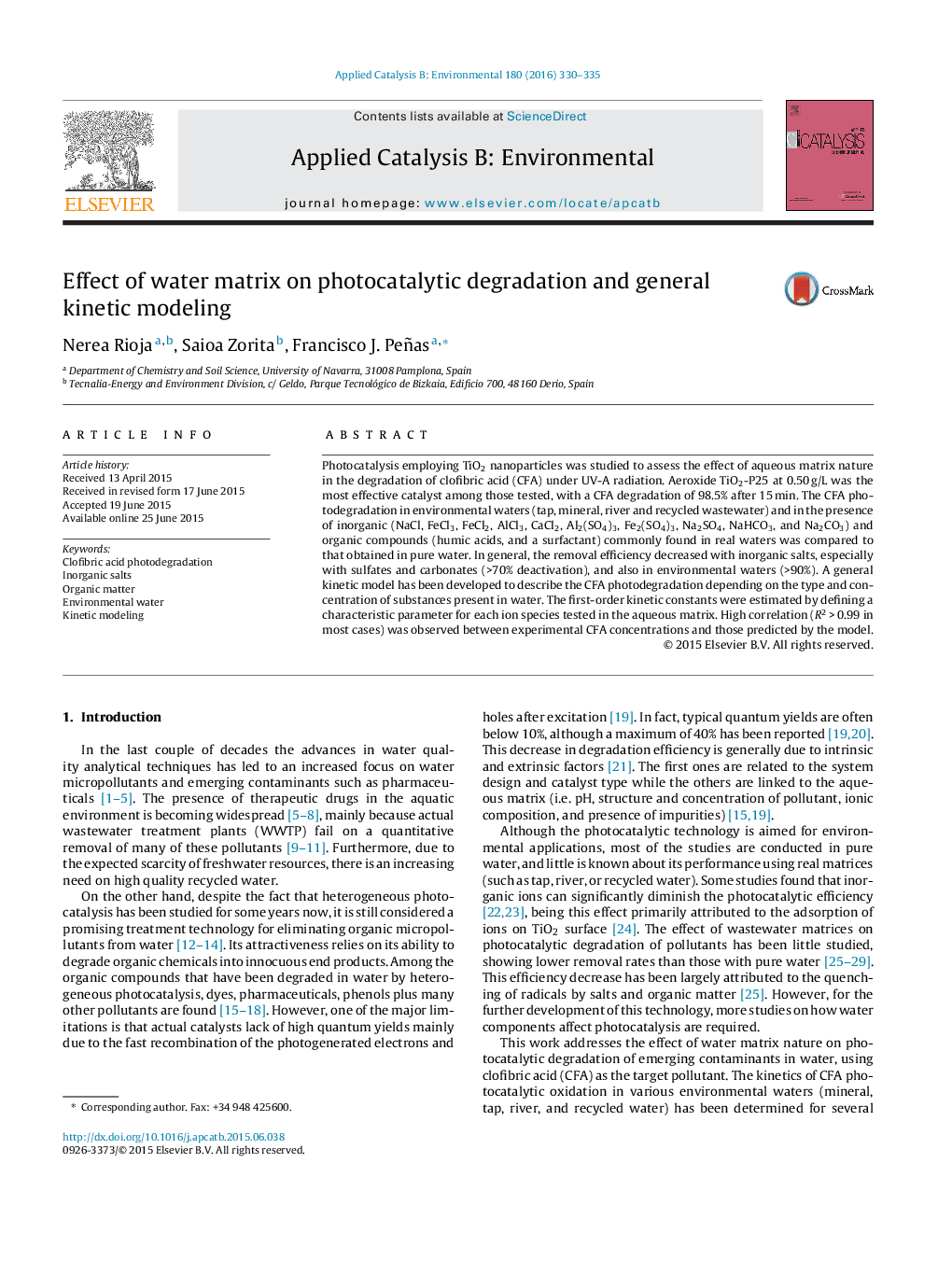| کد مقاله | کد نشریه | سال انتشار | مقاله انگلیسی | نسخه تمام متن |
|---|---|---|---|---|
| 45249 | 46407 | 2016 | 6 صفحه PDF | دانلود رایگان |
• The effect of water matrix on the photodegradation of clofibric acid investigated.
• Five TiO2 photocatalysts studied and the optimal dosage for the best one determined.
• Different inorganic salts, organic compounds and environmental waters tested.
• A general model to consider the concentration of added substances on photodegradation.
Photocatalysis employing TiO2 nanoparticles was studied to assess the effect of aqueous matrix nature in the degradation of clofibric acid (CFA) under UV-A radiation. Aeroxide TiO2-P25 at 0.50 g/L was the most effective catalyst among those tested, with a CFA degradation of 98.5% after 15 min. The CFA photodegradation in environmental waters (tap, mineral, river and recycled wastewater) and in the presence of inorganic (NaCl, FeCl3, FeCl2, AlCl3, CaCl2, Al2(SO4)3, Fe2(SO4)3, Na2SO4, NaHCO3, and Na2CO3) and organic compounds (humic acids, and a surfactant) commonly found in real waters was compared to that obtained in pure water. In general, the removal efficiency decreased with inorganic salts, especially with sulfates and carbonates (>70% deactivation), and also in environmental waters (>90%). A general kinetic model has been developed to describe the CFA photodegradation depending on the type and concentration of substances present in water. The first-order kinetic constants were estimated by defining a characteristic parameter for each ion species tested in the aqueous matrix. High correlation (R2 > 0.99 in most cases) was observed between experimental CFA concentrations and those predicted by the model.
Figure optionsDownload as PowerPoint slide
Journal: Applied Catalysis B: Environmental - Volume 180, January 2016, Pages 330–335
